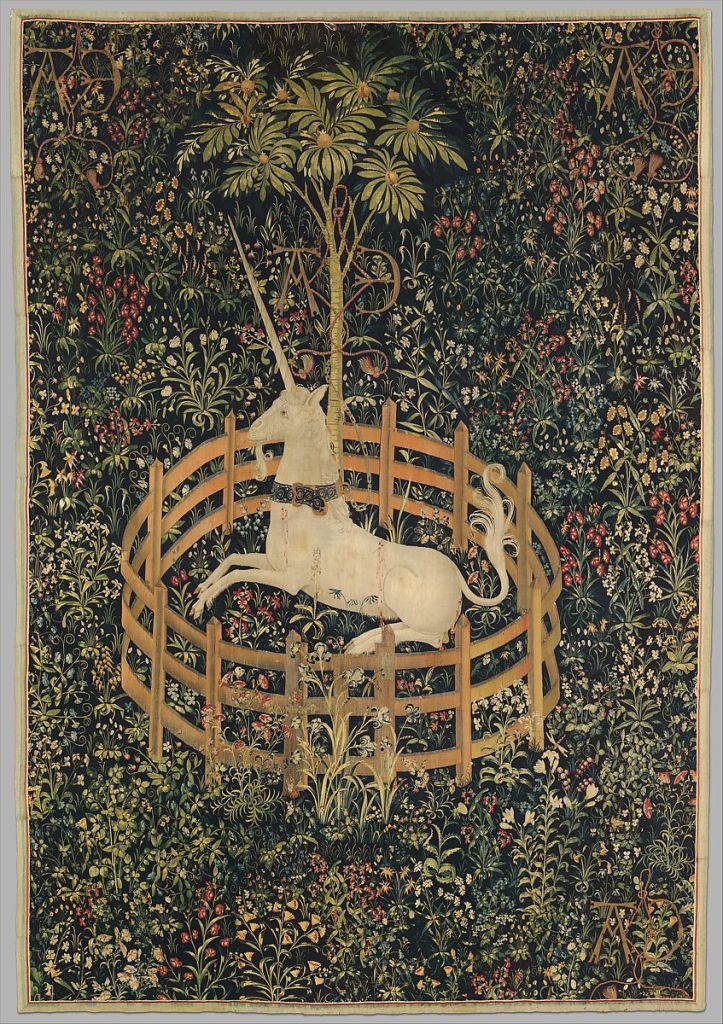Woven tapestries date as far back as the times of ancient Egypt, and the most famous series of medieval tapestries is probably The Lady and the Unicorn [c. 1460]. This mysterious series of tapestries has each piece representing one of the five senses (taste, hearing, sight, smell and touch), as well as the elusive sixth sense or concept titled only as À mon seul désir. These tapestries’ precise meaning remains unclear, and the same theme can also be seen in the series of paintings by Brueghel the Elder and Peter Paul Rubens‘ titled The Five Senses [1617-18]. While some medieval tapestries focus on scenes from the lives of nobility, including royal hunting and tournaments, others centre on everyday life, religious themes and landscapes. Below are four tapestries from the Middle Ages which are as beautiful as they are enigmatic.

The Unicorn Rests in a Garden/The Unicorn in Captivity (the Unicorn Tapestries) [1495 – 1505]
Woven from a French design in either Belgium or the Netherlands, the so-called “Unicorn Tapestries” are a series of tapestries that are often considered to be the most beautiful and enigmatic of all arts that survived to us from the Middle Ages. The tapestry on the right shows a unicorn in captivity, and is probably a part of this series of six other woven artworks that all show the entrapment of a mythical animal – the magical unicorn.
As part of other “Unicorn” tapestries, The Unicorn in Captivity represents the culmination of an arduous work – the sighting, the taming and the capture of the animal that ancient sources say could only be tamed by a virgin. Thus, the tapestries show the hunting for and the trapping of this magnificent animal by various huntsmen. However, the precise symbolic meaning of the tapestries still eludes historians and critics who point out this or that mysterious detail in the tapestries, discuss the various sequences in which the tapestries could be presented and their mysterious origin, and, generally, debate their multiple interpretations. Interpretations that rely on pagan and Christian symbolism, as well as on alchemy (“unseen forces finally seen and conquered”) were all proposed. Moreover, those who believe that The Unicorn in Captivity is a standalone tapestry say that the artwork may simply symbolise “the desire finally tamed”, one’s beloved finally “captured in the nets of his or her lover’s charm”, an allegory of “love being triumphant” and “a subject of affection conquered”. Those who favour the latter interpretation point out that the unicorn seems to be at peace and even content in its confinement (the fence is not high and the animal may escape since it is not securely chained to the tree). Also, the presence of “ripe pomegranates” on the tree pictured may symbolise both marriage and fertility. The tapestry can be found at the Metropolitan Museum of Art in New York, NY, US.
Continue reading “The Beauty & Mystery of Medieval Tapestries”
